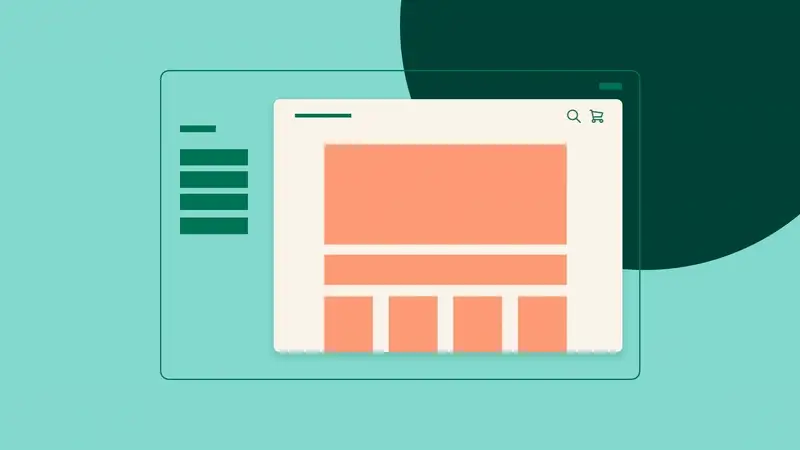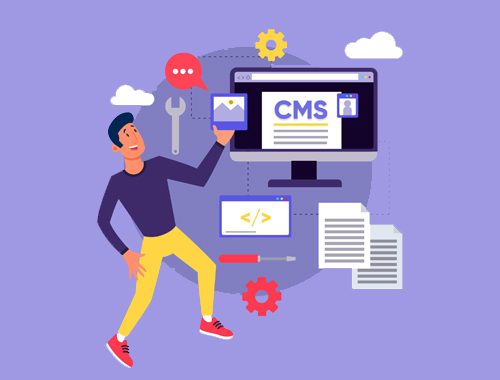How to Build a Shopify Store in 6 Simple Steps
Are you feeling a bit daunted at the prospect of diving into the bustling world of online business? You’re certainly not alone. Many of us have found ourselves staring at the challenge of developing an ecommerce website, only to be left wondering where on earth to begin.
Intriguingly, with over 500,000 active stores flourishing on Shopify, it’s clear that launching a successful online venture isn’t just a pipe dream—it’s absolutely within your grasp with the right strategy.
We’ve been in those very same shoes, scouring for a guide that gets straight to the point without drowning us in technical gobbledygook. After plenty of research and hands-on experience, we’ve cracked how to set up a Shopify store through 6 straightforward steps.
This blog aims to share these revelations with you, turning what appears like an insurmountable task into something quite doable. Are you ready for a simpler approach?
Benefits of Building an E-Commerce Website
Building an e-commerce website opens doors to a wider audience. We can reach more customers and cut costs while providing them with a better shopping experience.
Increased reach and customer base
Building a Shopify store allows us to reach customers far beyond our local area. We can connect with potential buyers from different regions and even countries. An online presence gives us the chance to engage with a broader audience, increasing our customer base significantly.
Creating an ecommerce website opens doors for various sales opportunities. Our products can be accessible 24/7, allowing shoppers to browse and buy at their convenience. This flexibility enhances the likelihood of making sales while we sleep or focus on other business tasks.
Market research plays a critical role in identifying our target audience’s preferences and behaviours. Understanding who our customers are helps shape our marketing strategies effectively.
This way, we ensure that every move we make attracts the right people to our digital storefront.
Success usually comes to those who are too busy to be looking for it. – Henry David Thoreau
Lower costs
Building a Shopify store helps us cut costs significantly. We avoid hefty investments in physical retail spaces. A digital storefront allows us to sell products without the burden of inventory.
This accessibility makes starting an online store feasible for many business owners.
Online platforms also reduce marketing expenses. Social media and search engine optimisation offer cost-effective ways to reach our target audience. With clear goals, we can maximise our return on investment in marketing strategies tailored to our specific needs.
We benefit from various integration tools that streamline payment processing and inventory management. These features save both time and money, making it easier for us to run an ecommerce store efficiently.
Lower operational costs empower us to grow our businesses while keeping prices competitive in the market.
Enhanced customer experience
We improve the customer experience by designing a Shopify store that meets user needs. This approach makes shopping easy and enjoyable for our visitors. A well-structured site helps customers find products quickly.
Our customisable designs allow us to create an attractive online retail space.
Setting up an internet shop also enables us to offer seamless payment options, enhancing convenience. We can integrate various payment gateways to fit our audience’s preferences. Effective mobile optimisation ensures shoppers have a smooth experience on all devices.
Focusing on these elements leads to higher satisfaction rates and encourages repeat business in our ecommerce operation.
Choosing the Right Platform: Shopify
Selecting the right platform can make or break your online business. Shopify offers a user-friendly interface, making it simple to build and manage our digital store efficiently.
Easy to use interface
Shopify offers an easy-to-use interface for all users. This feature benefits beginners setting up their first ecommerce store. We find that the clean layout simplifies navigation and reduces frustration.
No prior web design skills are necessary to create a professional-looking online shop.
Customising our Shopify store is straightforward. We can choose from various themes, making it easier to reflect our brand’s identity. Once we select a theme, editing elements like colours and fonts takes just a few clicks.
First-hand experience shows us that these customisation options allow us to make unique digital storefronts without hassle.
Setting up products on Shopify is equally simple. Adding product details and images occurs quickly through its user-friendly system. With clear prompts guiding us along the way, we can focus more on marketing strategies rather than technical difficulties in establishing our online presence.
Once we’ve established our site, we can delve into other aspects of building an effective Shopify store.
Customisable design options
Customisable design options play a key role in creating our Shopify store. We can choose from various themes that suit our brand’s identity and style. With these themes, we have the freedom to adjust colours, fonts, and layouts easily.
Our choices help establish a unique look for our digital storefront.
Adding personalised features is just as simple. We can insert logos, banners, and product images that reflect what we offer. This level of customisation strengthens our brand presence online.
It also enhances the customer experience by making navigation intuitive.
Applying these design options optimises our site for conversions too. Each adjustment helps draw attention to important elements like calls-to-action or featured products. Tailoring the design makes it easier for us to engage with customers effectively while building an ecommerce store that stands out among competitors in the market.
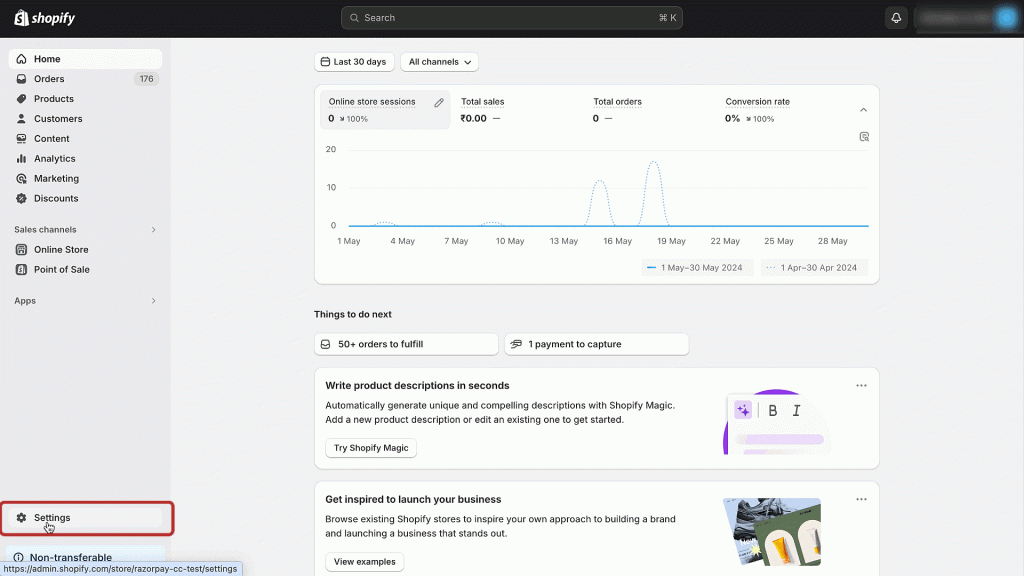

Payment gateway integration
Integrating a payment gateway is essential for our Shopify store. This step allows us to process online transactions smoothly and securely. Customers expect various payment options, such as credit cards and digital wallets.
A reliable gateway supports these methods, improving customer satisfaction.
Setting up the payment gateway involves choosing one that aligns with our business goals. Many platforms offer user-friendly integration tools for this purpose. Our first-hand experience shows that a seamless checkout process increases conversions significantly.
Once we establish the right solution, we can maximise sales and enhance the overall shopping experience.
Next, we’ll focus on inventory and tax tools to keep our operations running efficiently.
Inventory and tax tools
Inventory and tax tools make running a Shopify store easier. We can track our stock levels in real-time. This feature helps us know what products are available for sale. It also alerts us when items run low, so we never miss a sale.
Setting up sales tax is vital for our online business. Shopify allows us to automate the calculation of taxes based on customer location. This functionality ensures compliance with local laws while saving time during checkout processes.
Managing inventory and taxes effectively contributes to building a successful ecommerce store.

Mobile-friendly
A mobile-friendly website significantly improves our customers’ shopping experience. Many shoppers use their phones to browse and buy products online. A Shopify store that looks great on mobile devices attracts more visitors and increases sales.
We need to ensure our site adapts well to different screen sizes.
Shopify offers responsive themes that adjust automatically for mobile users. This feature simplifies the process of creating a digital storefront that works smoothly on smartphones and tablets.
Customers enjoy easy navigation, quick loading times, and clear product images on their devices. As business owners, we can capture more potential buyers by focusing on optimising our online shop for mobile usage.
Creating an ecommerce website with a strong focus on mobile usability should be a priority in our strategy. Testing the site’s performance on various devices helps us identify areas for improvement before launching it fully.
Ensuring our store is both visually appealing and functional will ultimately help us grow our Shopify store successfully.
6 Simple Steps to Building a Shopify Store
Building your Shopify store is straightforward. We can follow six simple steps that will guide us through the process seamlessly.
Step 1: Sign up for a Shopify account
We begin our journey by signing up for a Shopify account. This step is crucial for anyone interested in creating an online store. The sign-up process is simple and quick. We provide basic information like our email address, password, and store name.
After that, we can access the Shopify dashboard.
Once we sign up, Shopify guides us through setup options tailored to beginners. We can choose from various plans based on our business needs. Setting up an account opens the door to building a digital storefront efficiently.
Now, we are ready to explore themes and customise our site further as part of launching a retail website successfully.
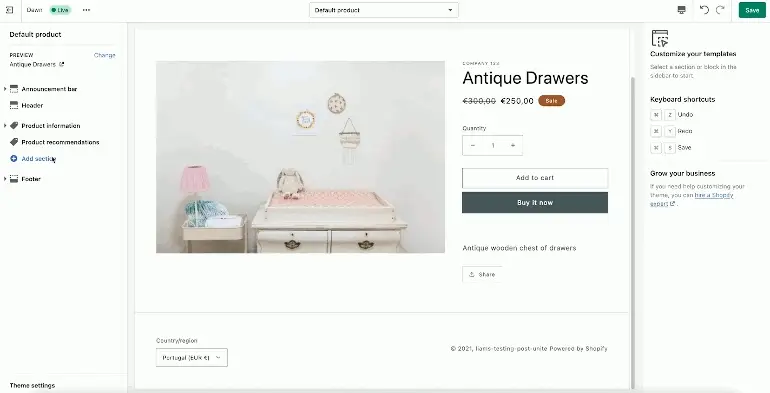
Step 2: Choose your theme
Choosing the right theme plays a crucial role in our Shopify store’s success. A well-selected theme helps us create an engaging experience for our customers. We should aim for a design that reflects our brand and appeals to our target audience.
Shopify offers numerous themes that we can customise easily.
Selecting a converting theme enhances user interaction and drives sales. As beginners, we have access to both free and premium options on Shopify’s platform. Testing different designs will help us determine what works best for our vision.
After we finalise the theme, it’s time to personalise the site further by adding unique elements that represent our business effectively. Next, we will look into customising our site for better functionality and aesthetics.
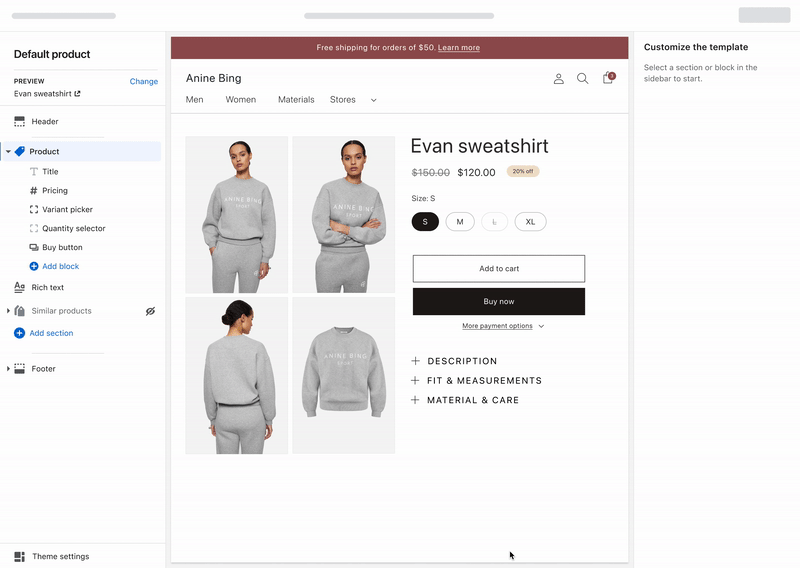
Step 3: Customise your site
Customising our site is a crucial step in building a Shopify store. We can create a unique brand identity that resonates with our audience. Shopify offers various themes tailored for different business types.
Selecting an appealing theme helps us attract visitors immediately.
After choosing the theme, we adjust layout elements, colours, and fonts to match our brand’s image. Adding custom logos and images enhances professionalism too. This process allows us to stand out from competitors and build trust with customers.
We must pay attention to user experience as well. Easy navigation encourages customers to explore our products further. As we design product pages, clear descriptions and high-quality images play vital roles in converting visitors into buyers.
Optimising this area paves the way for success in establishing an online business through Shopify.
Step 4: Add products
Adding products to our Shopify store is a vital step in the process. We can do this easily by navigating to the “Products” section in our store’s dashboard. Each product should have clear images and detailed descriptions.
This helps customers understand what we offer. We must also set competitive prices that reflect our business goals.
Creating a brand identity starts here too. By choosing unique names for our products, we enhance recognition among shoppers. Market research aids us in determining popular items, making sure we’re meeting customer demand effectively.
It’s important to categorise these products neatly for easy browsing.
After adding products, we need to optimise them for sales conversions. This might include setting up discounts or special offers that attract buyers’ attention quickly. Once we’ve added all necessary information about our inventory, we’ll be ready to look into payment and shipping options next.


Step 5: Set up payment and shipping
After we have added our products, we must focus on setting up payment and shipping. This step is crucial for ensuring a smooth transaction process for our customers. We can choose from multiple payment options available through Shopify, such as credit cards and PayPal.
Selecting the right methods helps us cater to our audience’s preferences.
Shipping configurations are equally important. We can decide on shipping rates and regions we will serve. Offering free shipping may boost sales significantly. It’s essential to set clear policies to avoid confusion later on.
We can also integrate dropshipping options if we wish to sell without holding inventory, making it easier for us to start an online store with minimal risk.
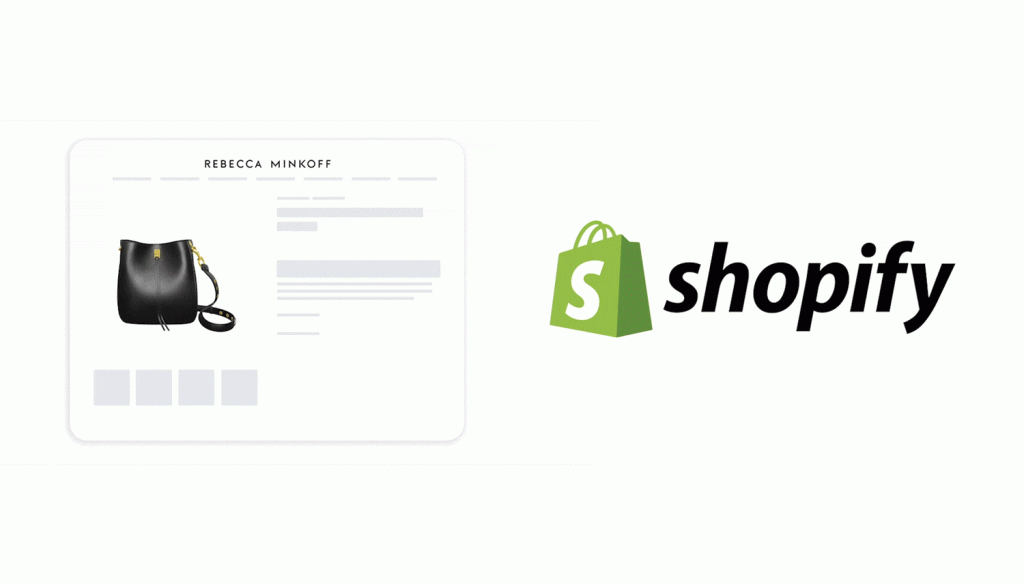
Step 6: Test and launch your site
Testing and launching our site is crucial for success. We must check every feature to ensure everything works smoothly. This includes testing the payment process, shipping options, and product pages.
We should take this time to fix any glitches or errors that might arise.
Once we feel confident about the functionality of our store, we can launch it for customers. The excitement builds as we open our virtual doors! Market research has shown that a well-tested website attracts more users and leads to higher conversions.
With just six simple steps, we’re ready to create a successful Shopify store and start our online retail journey.
Final Tips for Success
Final Tips for Success: Establish a unique brand identity to attract customers. Focus on user-friendly designs and ensure your site is secure. Optimise for mobile use, as many shoppers browse on their phones.
Keep improving your website regularly to meet customer needs. Explore more strategies that can boost your Shopify store’s performance!
Establish your brand
Establishing our brand serves as a critical step in building a successful Shopify store. We create an identity that resonates with our target audience. Strong branding helps us stand out from the competition.
It forms the basis of customer loyalty and trust.
We must pay close attention to how we design our products and present ourselves online. Our customers need to recognise us easily. Setting clear goals for our marketing strategy is essential.
Knowing who we are trying to reach guides these efforts effectively.
Conducting market research allows us to understand consumer preferences better. This knowledge informs our branding decisions and shapes our online presence. An engaging brand will attract more visitors while optimising for conversions enhances sales potential significantly.
Next, we will focus on user interface and user experience, ensuring a pleasant shopping journey for customers.


Focus on UI/UX
UI and UX play a crucial role in our Shopify store’s success. A well-designed interface allows customers to navigate our site easily. We should prioritise clear layouts and intuitive design elements.
This approach enhances the shopping experience, encouraging visitors to stay longer.
A focus on UI/UX helps us attract more customers. When we optimise for user satisfaction, it can increase conversion rates significantly. Simple navigational paths make it easier for shoppers to find products quickly.
Improving these aspects creates a positive impression of our brand and leads to repeat business in our e-commerce journey.
Ensure online security
Focusing on UI/UX leads us to another vital element: online security. We must ensure our Shopify store is secure to protect our customers and business. Cyber threats can come in many forms, so we need safeguards in place.
Using HTTPS encryption secures data as it travels between our website and users. This protects sensitive information like credit card details. Regularly updating software and plugins also strengthens our site’s security.
We should consider using strong passwords for all accounts associated with the store. Multi-factor authentication adds an extra layer of protection too. Keeping backups of important data ensures we can recover quickly if any issues arise.
Optimising for mobile also plays a role in security since more shoppers use phones to buy products online. A secure platform helps build trust with buyers, making them feel safe about purchasing from us.
Optimise for mobile
We must optimise our Shopify store for mobile. Mobile shopping continues to rise, with nearly 80% of consumers using their smartphones for online purchases. A mobile-friendly site enhances user experience and boosts conversions.
We should ensure that our design looks great on all devices. Selecting a responsive theme from Shopify helps us achieve this easily.
Testing our site on different screen sizes is essential. This process allows us to spot any issues that may frustrate users. Streamlined navigation makes it easier for visitors to browse products and complete purchases quickly.
Simplifying the checkout process also reduces cart abandonment rates, which can impact sales significantly.
Understanding market research and knowing our target audience play key roles in optimisation efforts. Most customers expect quick loading times, so we need to optimise images and reduce unnecessary elements on the page.
Our work doesn’t end after launching; continuous improvements keep our Shopify store competitive in the ever-evolving e-commerce landscape.
Continuously maintain and improve your website.
We must continuously maintain and improve our website to keep it relevant and effective. Regular updates help us respond to market changes and customer feedback. We can refine our Shopify store based on user experiences, ensuring that visitors enjoy a seamless shopping journey.
Customer preferences shift over time. Research enables us to adjust our offerings and enhance site functionality accordingly. Optimising for mobile is crucial since many shoppers use smartphones today.
An appealing user interface boosts engagement and conversion rates significantly.
For those starting a digital shop, monitoring analytics gives invaluable insights into our performance. This data reveals which products attract attention or may need rethinking. Building an online retail store becomes easier when we prioritise consistent maintenance and improvement efforts at every stage of development.
FAQs
1. What are the first steps to setting up a Shopify store?
The initial stages of building a Shopify store include deciding on your product, creating an account with Shopify, and designing your virtual storefront.
2. How can I design my online retail store on Shopify?
Designing a web-based store involves selecting and customising a theme that suits your brand, adding products with descriptions and images, and setting up payment methods.
3. Can I grow my business after launching an online retail store on Shopify?
Yes! With consistent optimisation of your ecommerce website based on customer feedback and market trends, you can successfully grow your online business using the tools provided by Shopify.
4. What do I need to consider when developing my internet marketplace on Shopify?
When constructing an internet marketplace, consider factors like user-friendly navigation for easy shopping experience, SEO-friendly product descriptions to attract more customers and secure payment gateways for safe transactions.
5. Is it challenging to establish an internet-based shop with Shopify?
No! By following six simple steps – choosing products or services to sell; signing up with shopify; selecting a suitable theme; adding products; setting up payments & shipping options; testing & launching – you can easily start running a successful ecommerce website.
